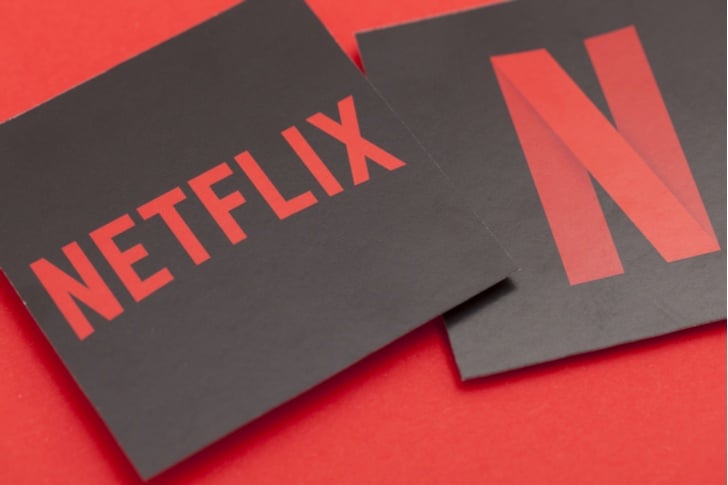Netflix, Inc. (NASDAQ:NFLX) hit an all-time high June 1. Trading shy of $360, RBC Capital Markets analyst Mark Mahaney believes Netflix stock could double over the next three years. Is he right?
I don’t think there’s any doubt Netflix stock can double over the next 36 months. However, like all analysts, Mahaney has hedged his bet suggesting that it could trade somewhere between $450 and $750 by June 2021.
That’s a lot of wiggle room, Mr. Mahaney. It’s akin to saying Tiger Woods could win another major in the next three years or he could retire or anything in between.
That’s okay. I’ll explain what I think the company has to do for Netflix stock to get to $750 over the next three years and the likelihood of that happening.
How Netflix Stock Can Double
I recently discussed the one number that’s driving Netflix growth: operating profit per paid subscriber. While the total number of paid subscribers is a key productivity indicator, it’s not nearly as crucial as profitable growth.
Which would you rather have? Annual subscriber growth of 20% along with 5% growth in operating profits per paid subscriber or 12.5% growth for both of these figures?
For me, it’s the latter every day of the week. Here’s why.
Detractors of Netflix stock argue that it’s addicted to debt. It must borrow huge amounts of capital to pay for content or risk getting passed by its competitors which include Amazon.com, Inc. (NASDAQ:AMZN) and Walt Disney Co (NYSE:DIS).
“They need to keep on borrowing as they are investing so much so quickly in content and have to stay ahead, there’s nothing else they can do,” Tom Harrington said recently, an analyst at Enders, a European research firm specializing in media and telecom. “They have to stay ahead of Amazon and Apple, and soon Disney. They are at the moment, but there are very well funded, larger, competitors starting to get their act together.”
Well, here’s what I know about the three competitors he mentions.
Amazon has a crappy offering on Prime. It will have to spend Herculean amounts to catch Netflix. Apple Inc. (NASDAQ: AAPL) charges more than my local cable company for videos and has less of a selection. Finally, Disney’s streaming service will be initially limited to its own content, which if you’ve seen the box office results of Solo: A Star Wars Story, isn’t all that and a bag of chips.
As far as I’m concerned, none of these three competitors come anywhere close to matching the depth and breadth of Netflix content.
That, as they say in investment jargon, is a moat of reasonably epic proportions.
Operating Profit Per Subscriber
The Guardian’s Mark Sweeney argues that Netflix’s total streaming obligations over the next few years will increase its total liabilities to $30 billion, almost double what they were at the end of March, suggesting that any slowdown in the video streaming service’s subscriber growth, puts it in a heap of trouble.
“Providing Netflix’s growth on subscribers and revenues remains at the same trajectory it is sustainable,” Ampere analyst Richard Broughton recently said. “Netflix has been adept at increasing pricing without losing subscribers but that is going to be difficult in its new growth markets like Asia and Africa, where there are cheaper competitors already. This year could be when Netflix starts to see slower growth. If the growth slows they are in trouble.”
In my opinion, Netflix’s international business has a long runway of growth. As I stated in May, its international streaming contribution margin is currently 15.3%, less than half the amount of its U.S. streaming segment.
It’s possible that the international streaming segment won’t reach the same contribution margins as the U.S. because of existing cheaper competitors in some of these countries where Netflix operates.
However, as long as they get into the low 30s, Netflix will still be growing its operating profit per subscriber, and that’s all that matters.
Bottom Line on Netflix Stock
In 2012, Netflix had a market cap of $5.4 billion, 108 times its operating profit of $50.0 million that year. Operating profits dropped dramatically that year as a result of significantly higher content costs which have been on the rise ever since.
At the end of 2017, Netflix had a market cap of $91.1 billion, 108 times its operating income of $838.7 million.
So, despite having an operating profit per subscriber of $6.93 in 2017, 4.6 times greater than in 2012, its market cap valuation multiple was the same.
Let’s assume Netflix has 470 million shares outstanding in three years. To get to $750 a share, it would have to have a market cap of $353 billion by the end of 2021.
Using the same multiple of 108 times operating profits, it would have to generate an operating profit of $3.3 billion. If Netflix’s paid subscribers were to double over the next three years to 235 million or $14 per paid subscriber, it would meet that valuation metric.
Considering Netflix finished Q1 2018 with an operating profit per subscriber of $8.23, I think $750 is more than achievable by the end of 2021.
As of this writing Will Ashworth did not hold a position in any of the aforementioned securities.

